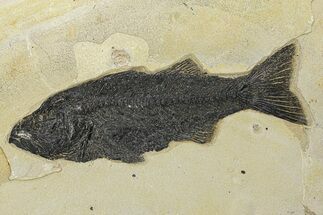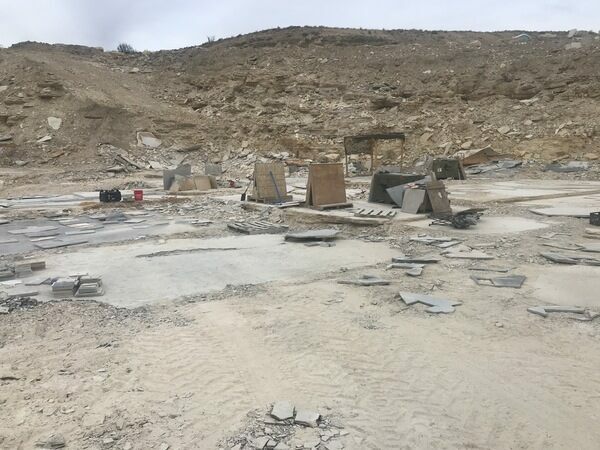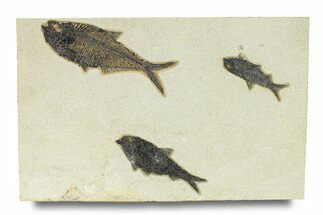This Specimen has been sold.
8.1" Uncommon Fossil Fish (Mioplosus) - Wyoming
This beautiful, 8.1" long fossil fish (Mioplosus labracoides) from the Eocene-age Green River Formation in Wyoming. It is well-detailed and prepared with bone structure, fins, and scale structure visible. Its disarticulated spine is especially prominent!
An acrylic display stand will accompany your purchase.
An acrylic display stand will accompany your purchase.
Mioplosus is a genus of large extinct perciform fish that lived through the Eocene epoch. This genus is easily distinguished by an elongate fusiform body, double dorsal fins, and forked tail. Mioplosus was a solitary predator with large teeth: a few fossil specimens have been collected with other, smaller fish lodged in their throats. Most fossils of this genus are from the Tertiary-aged Green River Formation in Wyoming, though relatives of this genus are known to range throughout Asia and New Zealand. Mioplosus is also believed to be related to the modern pike-perch of the genus Sander (Stizostedion).
Specimens like this come from the coveted 18 inch layer of the Green River Formation, which produces darker and more detailed fish than the majority on the market. The rock from this layer is much harder and more durable than other layers in the formation, likely due to its initial deposition conditions in deep water. Because of these conditions, fish found in the 18-inch layer can be extracted whole and in excellent condition. This layer is typically collected at night using low-angle light to see the bump in the rock that the fish's backbone creates. They then cut these fish out and take them to a lab where the fish, which may be up to an inch under the surface of the rock, are meticulously extracted under microscope with hand tools.
50 million years ago, in the Eocene epoch, these fish thrived in Fossil Lake, which was fed by the Uinta and Rocky Mountain highlands. The anoxic conditions at the bottom of Fossil Lake slowed bacterial decomposition, prevented scavengers from disturbing corpses, and, most interestingly, suffocated creatures that ventured into the oxygen-starved aquatic layer. The result is a miraculous exhibition of Eocene biota: a subtropical aquatic community within sycamore forests, teeming with creatures such as freshwater stingrays, dog-sized horses, menacing alligators, early flying bats, and one of the first primates.
SPECIES
Mioplosus labracoides
LOCATION
Lindgren Quarry, Kemmerer, Wyoming
FORMATION
Green River Formation, Gastropod Layer
SIZE
Fish: 8.1" wide, Rock: 11.2 x 7.15"
CATEGORY
SUB CATEGORY
ITEM
#292531
We guarantee the authenticity of all of our
specimens. Read more about our
Authenticity Guarantee.
specimens. Read more about our
Authenticity Guarantee.
 Reviews
Reviews













